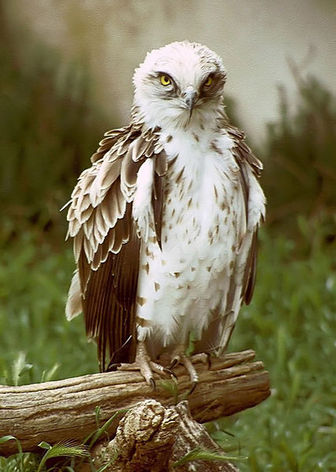Banded Snake-Eagle
Western Banded Snake-eagles live in woodlands, mainly along rivers, but they avoid dense forests. The west Banded eagle makes a nest then makes a new one the next year

Original source: :OrchiLicense:GFDLI, the copyright holder of this work, hereby publish it under the following licenses:Permission is granted to copy, distribute and/or modify this document under the terms of the GNU Free Documentation License, Version 1.2 or any later version published by the Free Software Foundation; with no Invariant Sections, no Front-Cover Texts, and no Back-Cover Texts. A copy of the license is included in the section entitled GNU Free Documentation License.www.gnu.org/copyleft/fdl.htmlGFDLGNU Free Documentation Licensetruetrue
Author: :OrchiLicense:GFDLI, the copyright holder of this work, hereby publish it under the following licenses:Permission is granted to copy, distribute and/or modify this document under the terms of the GNU Free Documentation License, Version 1.2 or any later version published by the Free Software Foundation; with no Invariant Sections, no Front-Cover Texts, and no Back-Cover Texts. A copy of the license is included in the section entitled GNU Free Documentation License.www.gnu.org/copyleft/fdl.htmlGFDLGNU Free Documentation Licensetruetrue
Permission: GNU Free Documentation License
The Banded Snake-Eagle is classified as Least Concern. Does not qualify for a more at risk category. Widespread and abundant taxa are included in this category.
Western Banded Snake-eagles live in woodlands, mainly along rivers, but they avoid dense forests. The west Banded eagle makes a nest then makes a new one the next year Behavior - Western Banded Snake-eagles mainly hunt snakes, but also other small vertebrates, ambushing from a perch. They drop from the perch to trunk, foliage or ground. They are a solitary bird, and very secretive. More
southern banded snake-eagle has a large, rounded head, with ... More
These images of the southern banded snake-eagle were made at the Amani Reserve in November 2006. This is a shy and uncommon bird that, unlike here, usually hunts from secluded perches. More
southern banded snake-eagle has a large, rounded head, with the feathers flaring out from the sides down to the neck giving a cowled appearance (2) (4). The plumage is grey-brown on the head and blackish-brown on the upperparts, while the breast is brown, becoming white with grey-brown bars on the underparts and thighs. The wings are mainly blackish-brown above and whitish below (4), and the white-tipped tail is marked on the underside with three distinct dark bands (2). More
Distribution of Southern banded snake-eagle in southern Africa, based on statistical smoothing of the records from first SA Bird Atlas Project (© Animal Demography unit, University of Cape Town; smoothing by Birgit Erni and Francesca Little). Colours range from dark blue (most common) through to yellow (least common). See here for the latest distribution from the SABAP2. Predators and parasites Young nestlings have been recorded as prey of Haliaeetus vocifer (African fish-eagle). More
Family : Accipitridae
Genus : Circaetus
Species : cinerascens
Authority : von Müller, 1851
